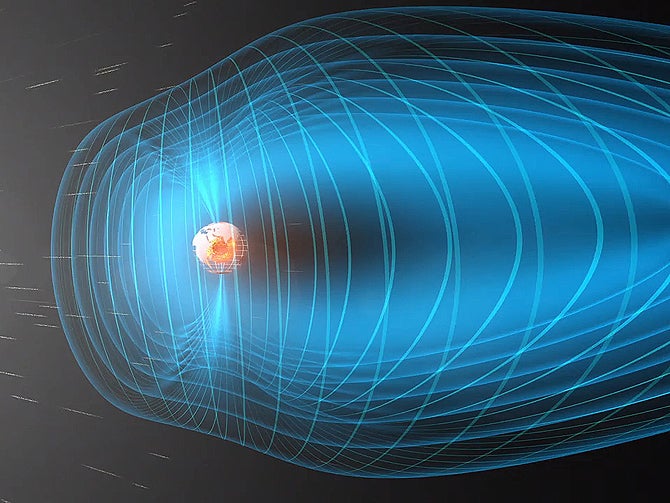Winter ahead — Fall back!
ListenCan you BELIEVE it! – Switch to Daylight Saving Time this Sunday at 2:00 a.m. Tomorrow is Fat Tuesday (Mardi Gras end of celebratory events that began on or about Epiphany) and Wednesday is Ash Wednesday. Generally speaking, Easter falls on the first Sunday after the first full moon after the vernal equinox, this year April 20th. Ecclesiastical lunar tables differ slightly from astronomical lunar tables, so rarely but occasionally, the ‘first Sunday’ rule doesn’t fit. The last time they were out of sync was 1962 when Ecclesiastical Easter occurred a month later than the astronomically determined Easter. Next divergence is 2019 – astro is 3/24; Gregorian is 4/21. Venus assaulted by ‘hot flow’ solar wind from the sun, engulfs planet, sucks at the second planet’s upper atmosphere. Fortunatgely Earth’s magnetic field protects from this, gives us aurorae. Might be that the Chinese lunar rover Yutu is just stuck in place – it can’t move because of abrasive and electrically conductive dust stuck in wheel mechanisms.
March 3, 2014
[Dave Heller] Even if Philadelphia temperatures don’t scream spring, the clock is happy to comply. Let’s set our time pieces with Derrick Pitts, chief astronomer at the Franklin Institute. Looking forward to Sunday!
[Derrick Pitts] Yeah, here it comes — a little sooner than we may have expected, but you know, if man would stop meddling around with the clock we’d find out that the time adjustment along with the actual arrival at spring might get us back to a more natural sequence of time.
But you’ve gotta love those later sunsets.
Well you know, they do help. They really do help make things feel a little bit better, and by switching the time around in this way, it makes it feel as though spring is coming a lot sooner than it actually is. We do have to keep in mind though that this particular time switch is as a result of a Congressional action that was intended originally to see if there was a way to save energy by moving the clock times around — either the first of March or the end of March, beginning of April things like that. And over the last few decades, that timing has been shifting around dramatically, trying to figure out where the best location is to plop this time change. The jury is still out whether or not moving the time change from standard time to daylight saving time at the beginning of March is really the best way to save energy. So it’s possible that we might see this time change shift yet again sometime in the future.
‘Course down in New Orleans they’re saving their energy for tomorrow, Mardi Gras.
The celebrations that have been taking place since epiphany come to a close tomorrow with Fat Tuesday, or Mardi Gras. And the very next day after that is Ash Wednesday. All of this is leading up to the coming of Easter, which generally speaking, occurs on the first Sunday following the first full moon following the Vernal Equinox.
-

Photo by Flickr user DoctorWho
That’s easy to remember, but the “generally” makes me wonder if there are exceptions to the rule.
Well as it turns out, there are exceptions. And the difficulty is that when we look at the astronomical definition of when Easter comes, we find that it actually differs slightly from what’s called the ecclesiastical date for Easter. The ecclesiastical date for Easter is fixed by the Catholic Church when Easter should occur. Now as it turns out, the way in which that’s calculated is that rather than using an astronomical calendar to look at the phasing of the moon, an ecclesiastical calendar for lunar phases is used. Now, the two are pretty close together, but the ecclesiastical calendar was established centuries ago and doesn’t really account for the accuracy of modern day charts in figuring the phasing of the moon. So there is a very slight difference, or there can be a very slight difference, in these dates. Now, does it really amount to much? No, it actually doesn’t because when we look at those slight differences in the two calendars, we find that it might shift the date of Easter from one date to another, but it happens rather infrequently. In fact, the last time it occurred was in 1962 that the ecclesiastical Easter day and the astronomical Easter date did not coincide. It’ll happen again in 2019, but it’s kind of rare when they diverge. So, for all intensive purposes, generally speaking, for Sunday after the first full moon, after the vernal equinox.
Derrick, we’re getting a weather update. Warm winds emanating past Venus coming our way, but I don’t feel anything.
And it’s a good thing we don’t feel anything! Because here on this planet we have the luxury of a magnetic field around the planet that protects us from this solar wind, this blast of electromagnetic particles that’s constantly being pressed out of the sun by the thermonuclear fusion process that generates its energy. For planets that are closer to the sun, they might become enveloped in this solar wind, particularly what are called hot flows, hot flows of solar wind. And in the case of Venus the planet it seems, we’re now beginning to understand, can become completely enveloped by this hot flow of solar wind. Not talking about temperature so much in the solar wind as we are talking about the energetic nature of the solar wind that can encompass the planet.
Kind of like the microwave effect.
Yeah, sort of like the microwave effect. The good thing for us is that we’re protected from this in that our magnetic field deflects the solar wind around our planet, around our magnetic field, so we are well protected from almost all of the deadly effects of the solar wind.
-

A constant stream of particles and electromagnetic waves streams from the sun toward Earth, which is surrounded by a protective bubble called the magnetosphere. A scientist at NASA Goddard has recently devised, for the first time, a set of equations that can help describe waves in the solar wind known as Alfven waves. Credit: European Space Agency (ESA)
Lastly, let’s get a weekly update on the travails of YuTu, sojourning or not on the moon.
And the story goes on. You know, the YuTu rover was placed on the moon by China. It came in two parts, there was the lander and then the rover that comes down off the lander. It has traversed about 300 feet out on the planet’s surface and then came to an abrupt halt. It was thought that it was originally connected to the lunar night, the two weeks of lunar night that may have frozen up some components. As it turns out, the Chinese operators were able to reestablish communications, and it looks like almost all of the science tools on board the craft are working properly. So now it has come down to what looks like an issue of mobility, that perhaps YuTu is stuck in place, can’t move around on the surface. And one suspicion is that the incredibly abrasive and damaging lunar dust, which also happens to be electrically conductive, has gotten into the wheel mechanisms and has essentially gummed things up so that the rover can’t move anymore. More testing still has to be done to confirm whether or not this is the case, but it could be that YuTu will be relegated to a fixed location of science work on the surface of the moon right where it sits.
WHYY is your source for fact-based, in-depth journalism and information. As a nonprofit organization, we rely on financial support from readers like you. Please give today.




